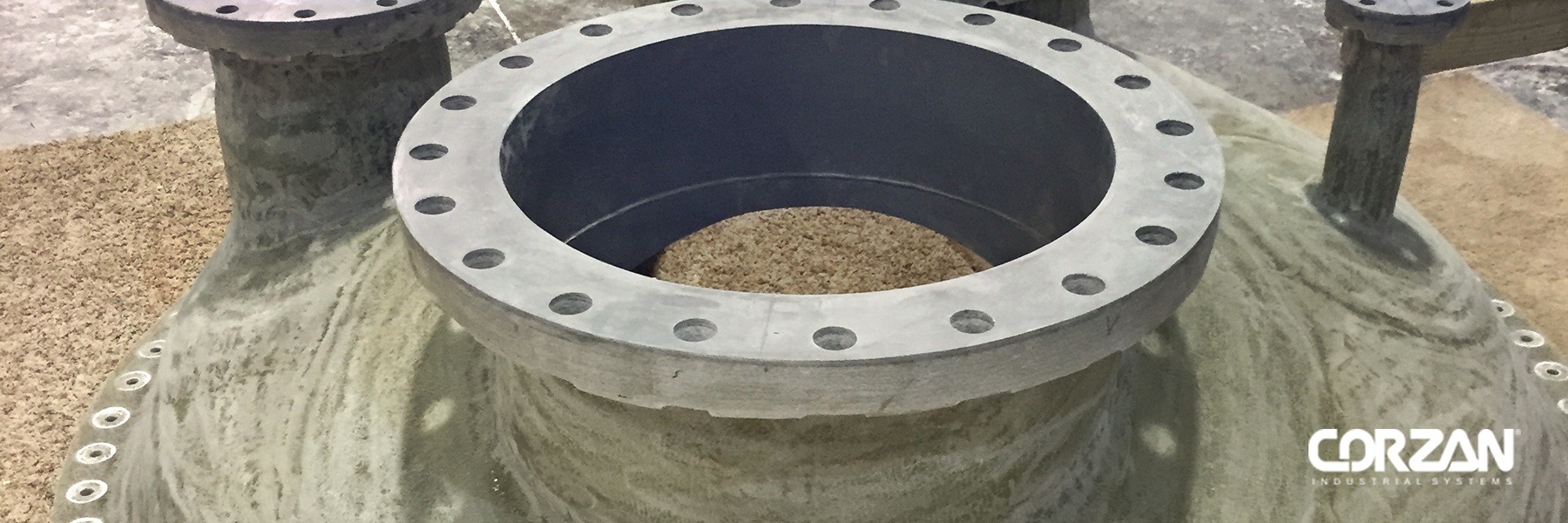The Most Critical Factors for Nonmetallic Storage Tank Design, Construction and Installation
For vessels storing hundreds or thousands of gallons of corrosive chemicals, safety is a critical component. To ensure an installed vessel will store chemicals safely, tank design must be based on a documented procedure known as a process safety management (PSM) program.
The Occupational Safety and Health Administration (OSHA) outlines general procedures required for PSM programs, which are adopted and adjusted by each plant.
The OSHA 1910.119 Process Safety Management of Highly Hazardous Chemicals contains “requirements for preventing or minimizing the consequences of catastrophic releases of toxic, reactive, flammable, or explosive chemicals. These releases may result in toxic, fire or explosion hazards.”
The section for mechanical integrity states, “equipment used to process, store, or handle highly hazardous chemicals needs to be designed, constructed, installed and maintained to minimize the risk of releases of such chemicals.”
As a result, make important safety steps and considerations in accordance with the PSM program, which ensures all hazards are assessed and addressed in the final vessel.
Design Considerations
To store caustic or acidic chemicals, first determine the physical requirements (size and type) of the vessel and related remediation systems. The shell’s diameter and height are based on the liquid volume to be stored, and the vessel may need supporting components as well.
Depending on the chemicals involved, remediation systems must often control the release of chemicals through venting to scrubbers or flares. Also, surge or overflow tanks, which are designed to receive residual chemicals, may be needed. Examples of these system components include chlorine absorption towers and emergency venting system (EVS) scrubbers, among others.
Consider every potential hazard to decide which remediation systems are necessary.
Construction Considerations
Construction of the storage tank and remediation systems can now commence. Assess the operating constraints (temperature, pressure and chemical concentration) to determine the best available materials.
Because pressure is not a factor with these atmospheric vessels, in the event of a failure, chemical incompatibility is the most likely cause. Assess materials for two key aspects of material compatibility:
- Compatibility with the expected chemical(s) and conditions.
- Compatibility with a broad range of chemicals and conditions in the event of a deviance or inadvertent reaction.
Ideally, non-pressurized tanks should resist corrosion from stored chemicals for decades. In some cases, however, plants continue to specify the same tank material over and over again, even though it experiences excessive corrosion. They accept regular repairs and replacements as unavoidable expenses. But by widening the lens of consideration beyond traditional materials—such as carbon steel or stainless steel—to other alternatives, these vessels can provide greater reliability and an extended service life.
For example, sulfuric acid concentrations of 93% or less inherently corrode carbon steel. Plant or operations managers can look to alternatives, including fiberglass reinforced plastics (FRP) and thermoplastic-lined FRP, instead.
Straight FRP may effectively handle the specified sulfuric acid, but will run into issues when any inadvertent reactions occur or other chemicals are unintentionally introduced (such as water).
The most reliable, cost-effective option for recognizing long-term performance for many applications is CPVC-lined FRP. FRP provides the structural integrity on the exterior, and CPVC acts as the internal chemical-facing surface. CPVC will resist corrosion for the specific chemical in use, but also offers extended resistance against most excursions a tank may encounter.
Due to CPVC’s extensive compatibility with a broad range of chemicals, it is often specified for various remediation systems, including scrubbers and vents, and also surge or overflow tanks.
Installation Considerations
Once the system design is in place, including the vessel’s materials, installation is up next. Poorly executed fabrication and joining will ruin even the best-designed system.
ASME RTP-1
If designing a dual laminate vessel, such as a CPVC-lined FRP, The American Society of Mechanical Engineers (ASME) RTP-1 is the standard to meet. ASME RTP-1 was created for manufacturers of reinforced plastic tanks and is the standard for the fabrication of reinforced plastic vessels used for the “storage, accumulation, or processing of corrosive or other substances at pressure not exceeding 15 psig externally or internally.”
AWS B2.4
The American Welding Society (AWS) B2.4 Specification for Welding Procedure and Performance Qualification of Thermoplastics provides test data for “assessing the properties of a welded joint,” which is used to “determine the ability of welders to make sound welds.”
In an industrial tank, failure is most likely to occur at the seam. Following the procedures and performance qualifications of AWS B2.4 increases the reliability of the seams and the likelihood of a vessel fulfilling its expected service life.
AWS G1.10M
As a follow-up to ASME RTP-1 and AWS B2.4, AWS G1.10M ensures that finished welds meet expectations. AWS G1.10 is the Guide for the Evaluation of Hot Gas, Hot Gas Extrusion, and Heated Tool Butt Thermoplastic Welds.
Before a vessel is put into service, someone with plastics experience must assess the fabricated tank’s welds for consistency and effectiveness.
Is CPVC Compatible with Your Industrial Applications?
Because CPVC acts as the corrosion-resistant layer in a CPVC-lined FRP vessel, the compatibility of the material with any chemicals involved is critical. Corzan® Industrial Systems has tested the compatibility of more than 400 chemicals with Corzan CPVC to give you confidence in its reliability.


